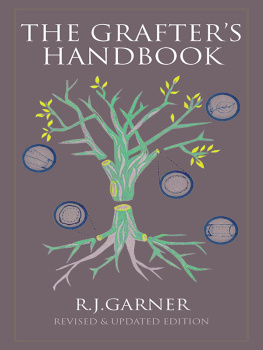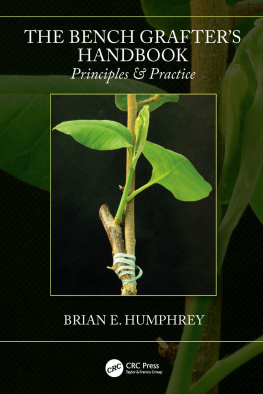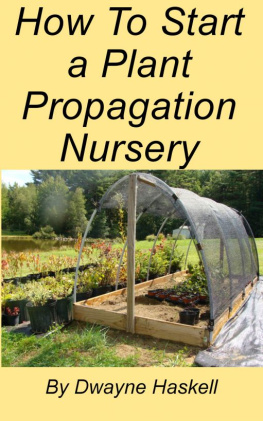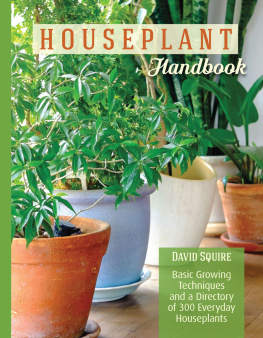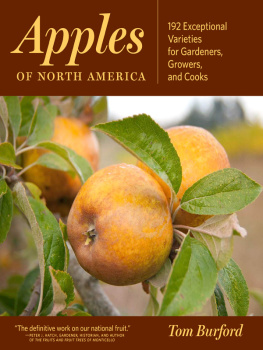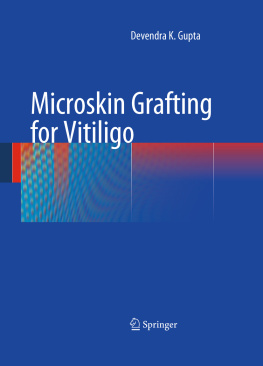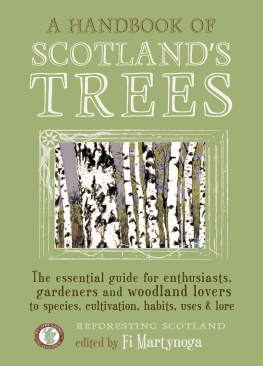THE GRAFTERS
HANDBOOK
R. J. GARNER
REVISED & UPDATED BY STEVEN BRADLEY
To Arthur William Witt 1864-1956
for many years Chief Propagator at East Malling
THE GRAFTERS
HANDBOOK

R.J.GARNER
REVISED & UPDATED BY STEVEN BRADLEY
CHELSEA GREEN PUBLISHING
WHITE RIVER JUNCTION, VERMONT
Text and illustration copyright
1947, 1958, 1967, 1979, 1988, 2013 by Robert John Garner.
Text and illustration revisions for the 2013 edition
2013 by Octopus Publishing Group Limited.
All rights reserved. No part of this book may be transmitted or reproduced in any form by any means without permission in writing from the publisher.
Robert John Garner asserts the moral right to be identified as the author of this work.
First published in 1947 by Cassell Illustrated. Revised and updated edition published in 2013 by Octopus Publishing Group, Ltd, Endeavor House, 189 Shaftesbury Avenue, London, WC2H 8JY.
This U.S. edition published in 2013 by Chelsea Green Publishing, 85 North Main Street, Suite 120, White River Junction, VT 05001
www.chelseagreen.com
Chelsea Green Editor: Makenna Goodman
UK Production Team
Editor: Jo Wilson
Senior Art Editor: Juliette Norsworthy
Designer: Jeremy Tilston
Production Controller: Peter Hunt
Printed and bound in China
First Chelsesa Green printing January, 2013
10 9 8 7 6 5 4 3 2 1 13 14 15 16 17
Library of Congress Cataloging-in-Publication Data available upon request
ISBN 978-1-60358-482-1
Chelsea Green Publishing
85 North Main Street, Suite 120
White River Junction, VT 05001
(802) 295-6300
www.chelseagreen.com
Contents
FOREWORD TO THE FIRST EDITION
by Sir Ronald G. Hatton, C.B.E., M.A., D.Sc., F.R.S., V.M.H.
FOREWORD TO THE SECOND EDITION
by Sir Ronald G. Hatton, C.B.E., M.A., D.Sc., F.R.S., V.M.H.
FOREWORD TO THE FOURTH EDITION
by Professor A. F. Posnette, C.B.E., Sc.D. (Camb.), Ph.D. (LONDON), A.I.C.T.A., F.I. BioI., F.R.S.
FOREWORD TO THE SIXTH EDITION
by Peter Seabrook M.B.E., V.M.H
Illustrations
PLATES
FIGURES
Forewords
Foreword to the First Edition
In producing The Grafters Handbook, Mr. R. J. Garner has had no easy task in steering a straight course between the fascinating myth of antiquity and the ingenious fads of the graft maniacs. He is, therefore, to be congratulated upon his clear exposition of this subject, which the fine line-drawings help to make abundantly plain. Both the text and the drawings reveal an enthusiast but more than an enthusiast addressing himself to fellow propagators. Whilst Mr. Garners long association with investigations into the propagation of fruit plants naturally leads him to draw most of his examples from his experiences in this field, he reveals himself as a close observer and keen manipulator of many other plants the ivy on the wall, the forced rose bush, the rhododendron, to mention but a few. The author has unconsciously succeeded in portraying himself wielding the tools, materials and methods which he describes so vividly. But here also is the craftsman weighing up scientifically the advantages and disadvantages of every detail of what he depicts. Only rarely is he tempted to record a process or a refinement just because it is delightfully complex or peculiar. Mr. Garner is at pains to bring his critical faculties into play and to show that this or that method of manipulation is the best suited to the particular plant, its structure, age, and condition.
The bibliography of over a hundred references testifies to the need for drawing together the somewhat isolated pieces of experimental information which have accumulated over the past thirty years. It was high time that these scientific findings should be correlated with the best traditional practices and summarized in an up-to-date Grafters Handbook. The professional horticulturist, the amateur and the student will all find guidance and interest in these pages, since our knowledge of the purposes and effects of grafting have greatly increased its use and adaptation.
October, 1946 | RONALD G. HATTON |
Foreword to the Second Edition
The demand for a second edition of The Grafters Handbook bears witness to its value both to the student in the field of propagation and to the skilled technician. During the past ten years the author has continued to pursue his own critical investigations, to collaborate with the physiologists, to keep abreast of the published work of others and to maintain his freshness as a teacher.
The valuable additions and adjustments in this second edition establish his right to expect that it will take its permanent place as the recognized textbook on the subject he so obviously enjoys and makes others enjoy. Here is a fine way of improving our techniques and inquiring into the principles upon which they are founded.
November, 1957 | RONALD G. HATTON |
Foreword to the Fourth Edition
This fourth edition is timely, not merely because previous ones have appeared at ten-year intervals but because the accumulation of new knowledge and the continued demand for the book requires it. The Grafters Handbook is now firmly established internationally as THE encyclopedia of plant propagation by grafting; the Russian translation is widely used where English is less well understood.
With his characteristic thoroughness, Mr. Garner has revised the text sentence by sentence, amending or supplementing each paragraph when new information seemed relevant and worth including. The familiar features, such as the clear drawings, are retained and the prose remains the essence of clarity. New references have replaced outdated ones, slightly shortening the bibliography.
Addicts of The Grafters Handbook can be assured that it has been improved without losing the enthusiasm with which it was originally imbued. The book is of immense value to both the practical knifesman in the nursery and the professor of horticulture what more can one say?
September, 1977 | A. F. POSNETTE |
Foreword to the Sixth Edition
The Grafters Handbook has, for 65 years, been the definitive work on the science and practice of grafting plants. I still have my copy from student days in the 1950s and I still remember the excitement when my first whip-and-tongue graft of Victoria plum took. That graft sealed with a squeeze of yellow clay and held in place with a strip of cotton cloth.
While the grafting skills remain unchanged, there have been a number of significant developments since the Fifth Edition of this book in 1988. The use of hot callusing to improve rapid graft union, the development of machines for grafting (even with such delicate stems as seedling tomatoes) and the breeding of improved rootstocks, for example.
I can think of no better person to undertake this update than Steve Bradley MHort (RHS), MA. From his childhood working on a family nursery, early days working for Pennells of Lincoln and many years lecturing on plant propagation at Askham Bryan, Writtle and Merrist Wood Colleges, his enthusiasm for making new plants and sharing knowledge has never wavered. I have no hesitation in recommending this latest revision of The Grafters Handbook to everyone who wants information on the best practice for grafting edible and ornamental plants.
August, 2012 | PETER SEABROOK MBE, VMH |
Next page
